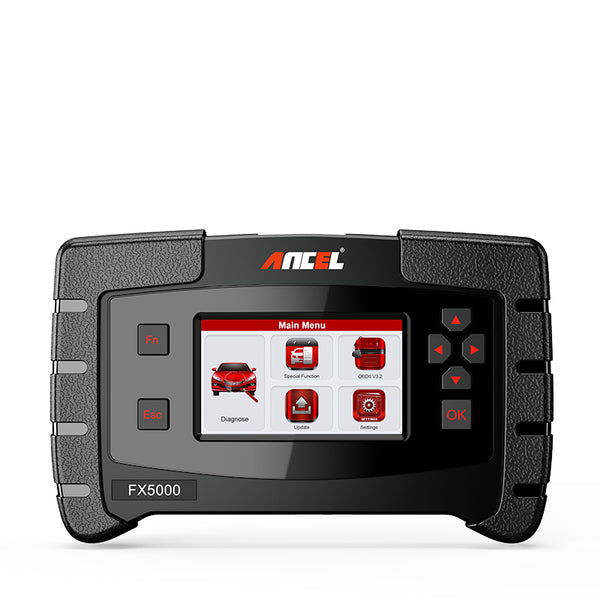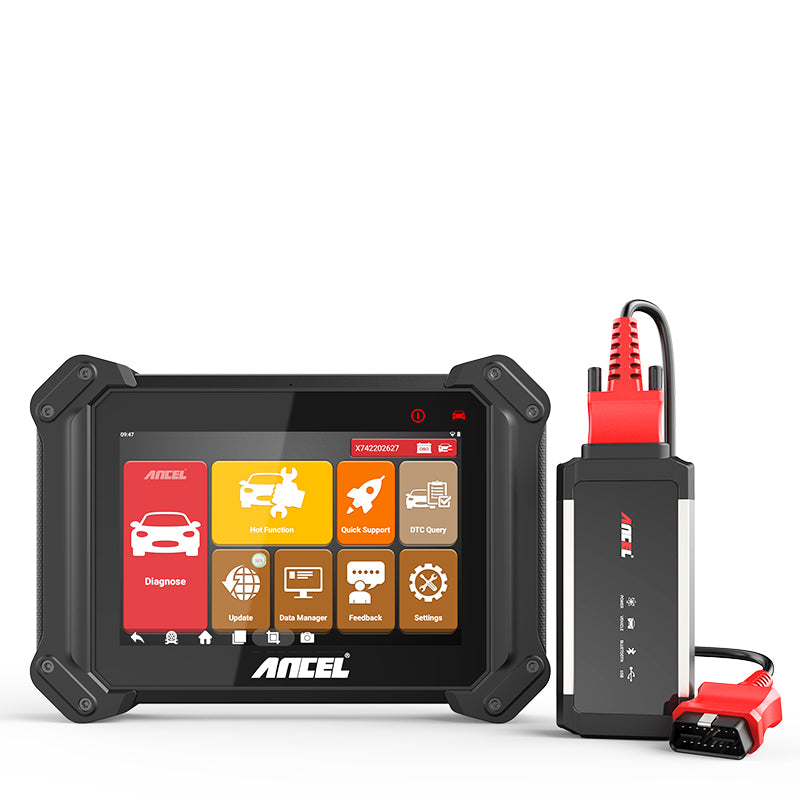When you're looking to buy an OBD2 scanner you might feel overwhelmed, by the array of options on the market each, with different prices and features. To help you make a informed choice we've put together an analysis that delves into the different features and capabilities offered at various price points. Whether you're a mechanic or simply passionate about cars having a grasp of these choices will assist you in selecting a scanner that aligns perfectly with your requirements.
Overview of OBD2 Scanners
OBD2 scanners are essential tools for modern automotive diagnostics, designed to interface with a vehicle's computer system to assist in troubleshooting issues. These devices provide access to real-time data and a historical log of the vehicle's performance, offering critical insights into the engine, transmission, exhaust system, and other key components. Their functionality can vary significantly based on the model and price, affecting their suitability for different users.
-
Basic Code Readers: At the lower end of the price spectrum, basic code readers offer the fundamental capability to read and clear codes. These devices are typically straightforward, providing direct fault codes without additional diagnostic information.
-
DIY Scanners: For the more tech-savvy user, DIY scanners present a balance between cost and functionality. These units often include features like live data streaming, freeze frame data, and perhaps some manufacturer-specific codes.
- Professional Scanners: High-end professional scanners are the most advanced, equipped with extensive capabilities including detailed parameter readings, actuator tests, programming, and even ECU coding. These tools are designed for professional environments, offering detailed diagnostic reports and support for multiple vehicles.
Related Reading: The Ultimate OBD2 Scanner Showdown: Which One Should You Buy?
Entry-Level Scanners ($20-$100)
For most casual users and beginners, entry-level OBD2 scanners provide an affordable gateway into vehicle diagnostics. These scanners generally support the basic OBD2 protocols and offer functionality adequate for identifying the most common vehicle issues.
Fault Code Identification: Allows users to identify engine light warnings by providing the OBD2 trouble codes.Erase Codes: After troubleshooting, these scanners can clear codes, which may turn off the check engine light if the issue has been resolved.
Limited Live Data: Some models might offer a limited view of real-time operating parameters.
These devices are primarily aimed at those who need basic diagnostic capabilities without the depth required for more complex repairs or modifications.

Mid-Range Scanners ($100-$500)
Mid-range OBD2 scanners are ideal for advanced DIYers and semi-professional mechanics. These devices offer enhanced functionalities, including broader vehicle coverage and deeper system diagnostics, which are not found in the more basic models.
Enhanced Diagnostic Functions: Ability to read beyond the basic engine codes, including transmission codes, ABS, and airbag systems.Live Data and Graphs: These scanners provide real-time data feeds, which can be viewed in graphs, making it easier to pinpoint issues.
Freeze Frame Data: Captures the exact vehicle status when a fault code is triggered.
Mid-range scanners are robust enough to handle more comprehensive diagnostics, making them a worthwhile investment for those who frequently work on cars.
ANCEL currently offers 3 OBD2 scanners at this price point.
- ANCEL X6 $279.99
- ANCLE X7 $369.99
- ANCEL V6 Pro+ $439.99
High-End Scanners ($500 and above)
Professional-grade OBD2 scanners are sophisticated tools that cater to advanced diagnostics and are commonly used in repair shops and by automotive professionals. These scanners support a broad array of vehicle makes and models and come equipped with features that can handle complex vehicles diagnostics.
Features:OEM Specific Diagnostics: Full access to all electronic systems and manufacturer-specific codes.Bi-directional Controls: Allows users to send commands to various systems within the vehicle to test functionality.
Advanced Programming: Capability to program new parts and perform updates to the vehicle’s software.
These high-end devices are essential for professionals who require detailed diagnostic capabilities and need to perform advanced repair and maintenance tasks.
$439.99
How to Choose the Right Scanner
Choosing the right OBD2 scanner involves understanding your specific needs and the type of vehicles you will work on. Consider the following factors:
-
Vehicle Compatibility: Ensure the scanner supports the specific makes and models you plan to diagnose.
-
Desired Features: Decide which features are crucial for your diagnostic needs and match a scanner that meets these requirements.
- Budget: Balance the cost against the functionalities you require. More features and broader compatibility generally increase the price.
ANCEL currently offers 3 OBD2 scanners at this price point.
- ANCEL MT500 $539.99
- ANCEL DS600 $649.99
- ANCEL DP500 $899.99
Conclusion
The right OBD2 scanner can significantly enhance your ability to diagnose and repair vehicle issues effectively. By understanding the features available across different price ranges, you can select a device that not only fits your budget but also meets your technical requirements, ensuring that every diagnostic task is performed with precision and efficiency.
FAQs
Are car scanners expensive?
Prices for car scanners vary widely based on their capabilities. Basic models can be quite affordable, while more sophisticated scanners with advanced features can be more expensive.
Do I need special training to use a car scanner?
Basic car scanners are user-friendly and do not require special training. However, interpreting the data correctly and performing more complex diagnostics might require a better understanding of automotive systems.
How do I update my car scanner?
Many modern car scanners allow updates via a USB connection to a computer or directly through the internet. Regular updates can help your scanner stay effective as new vehicle models and technologies emerge.















